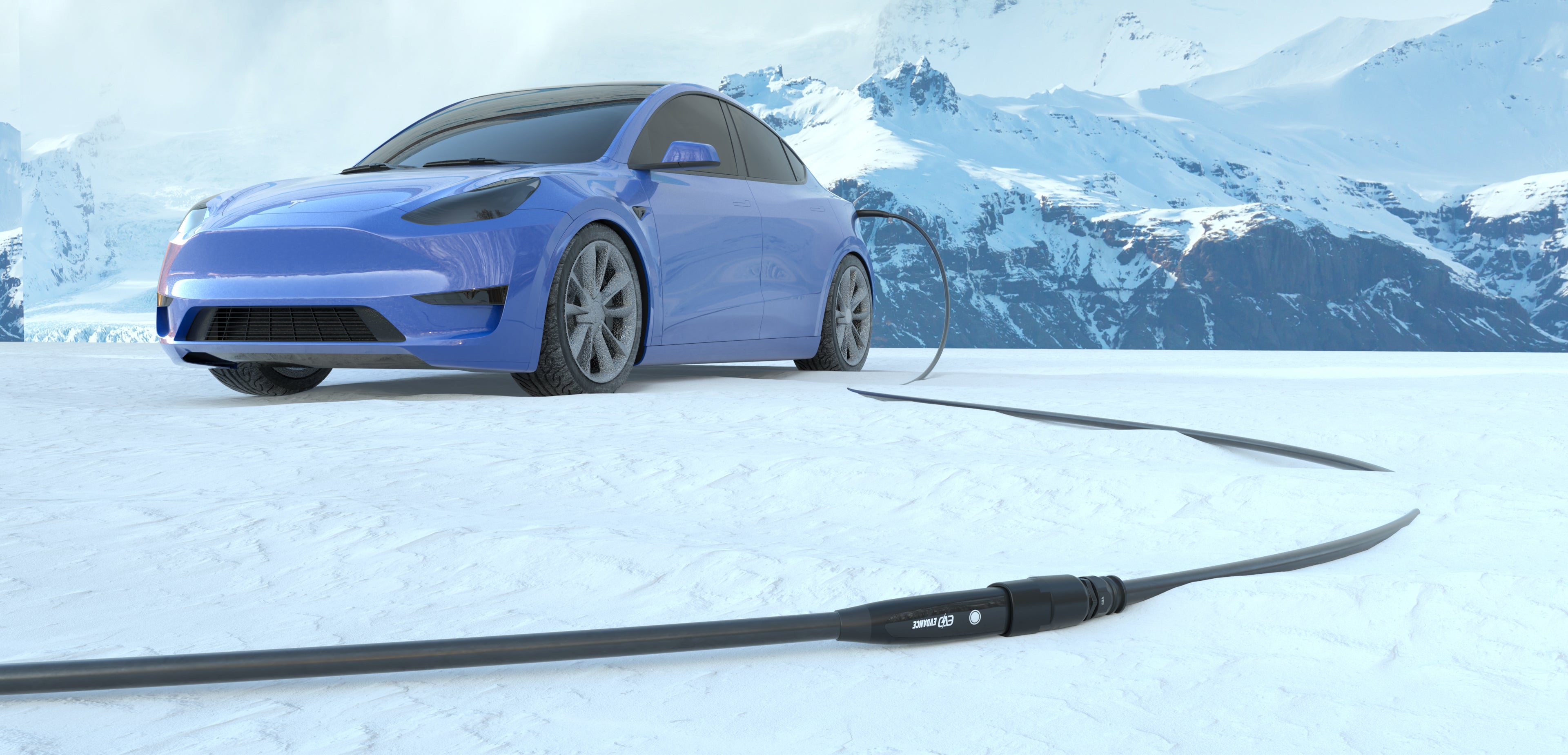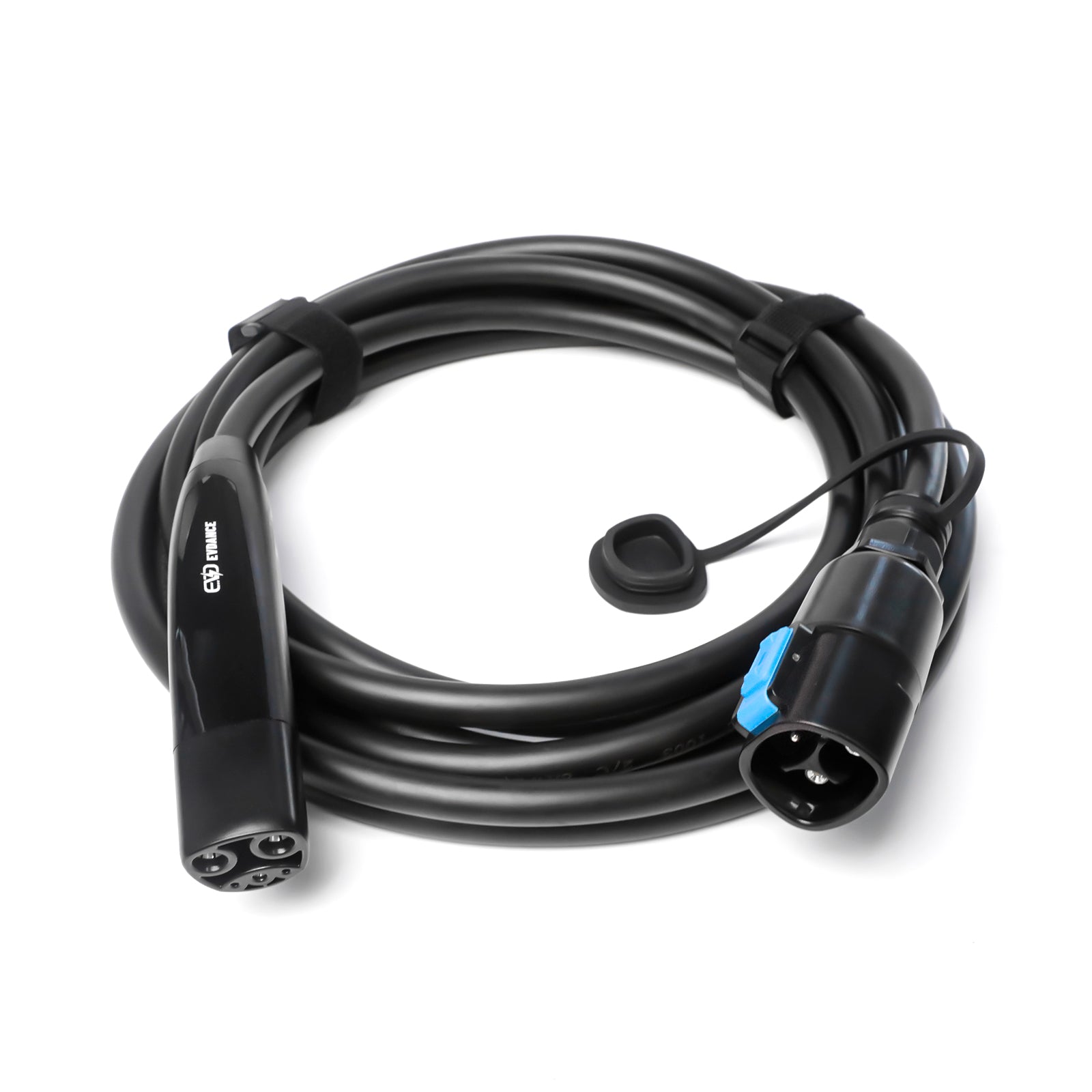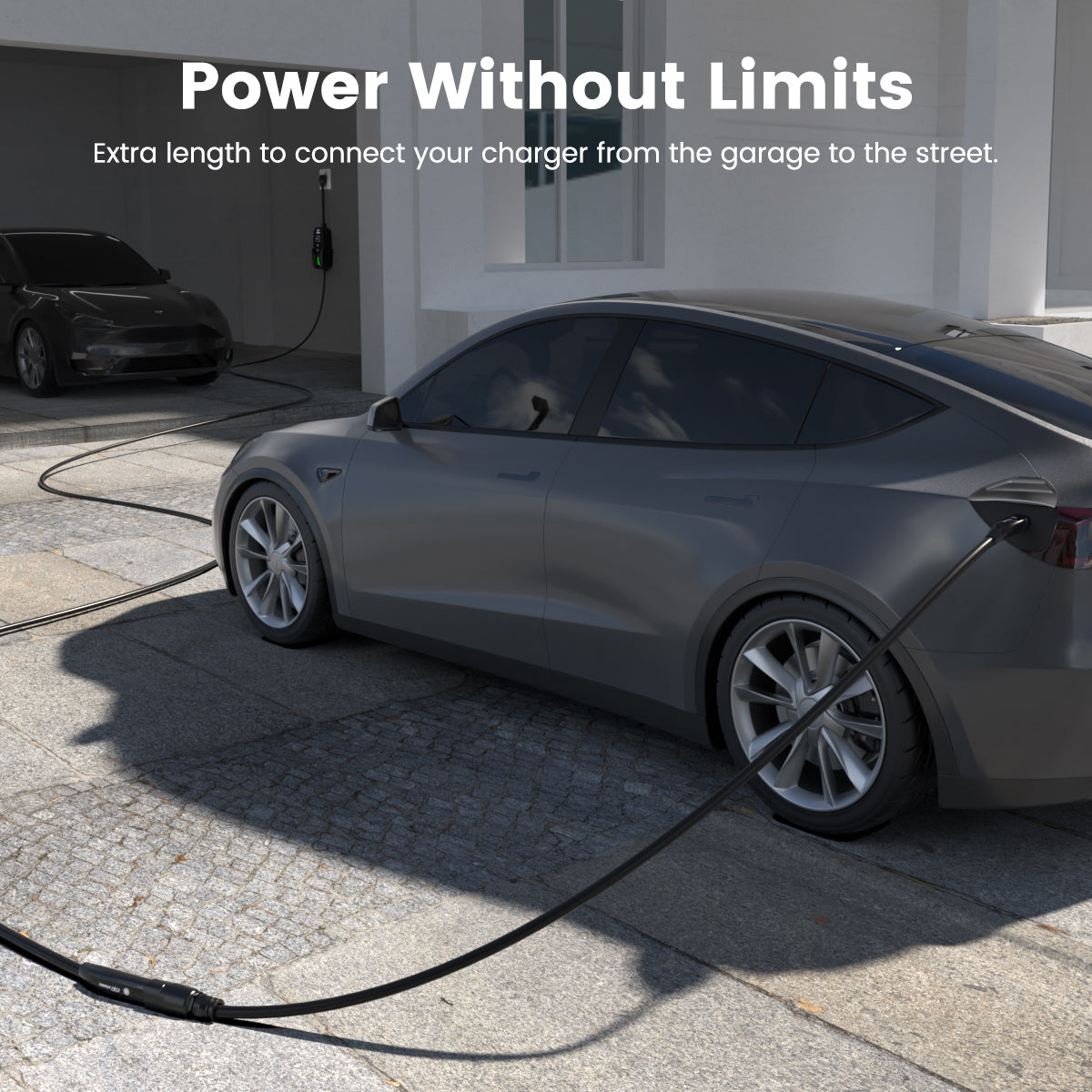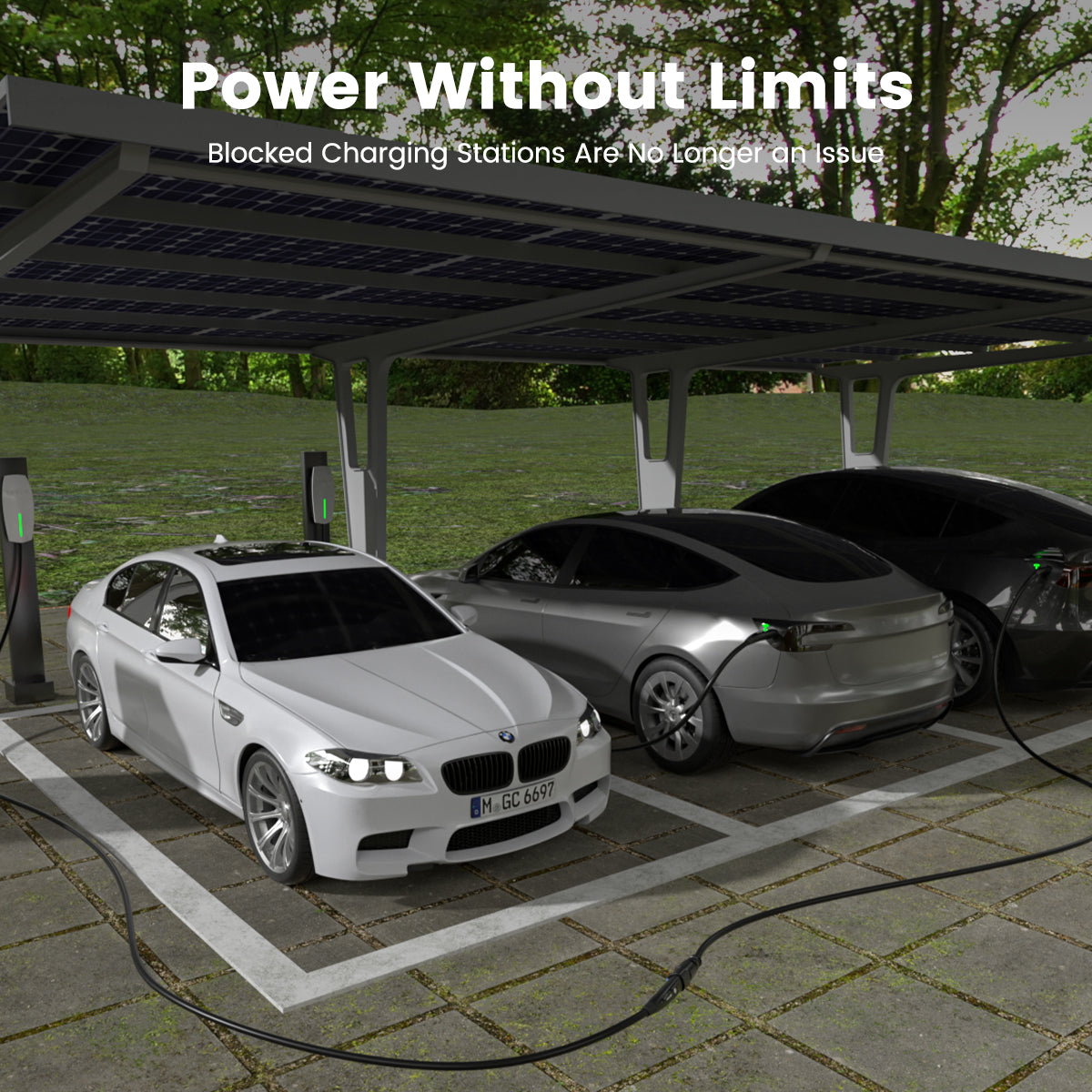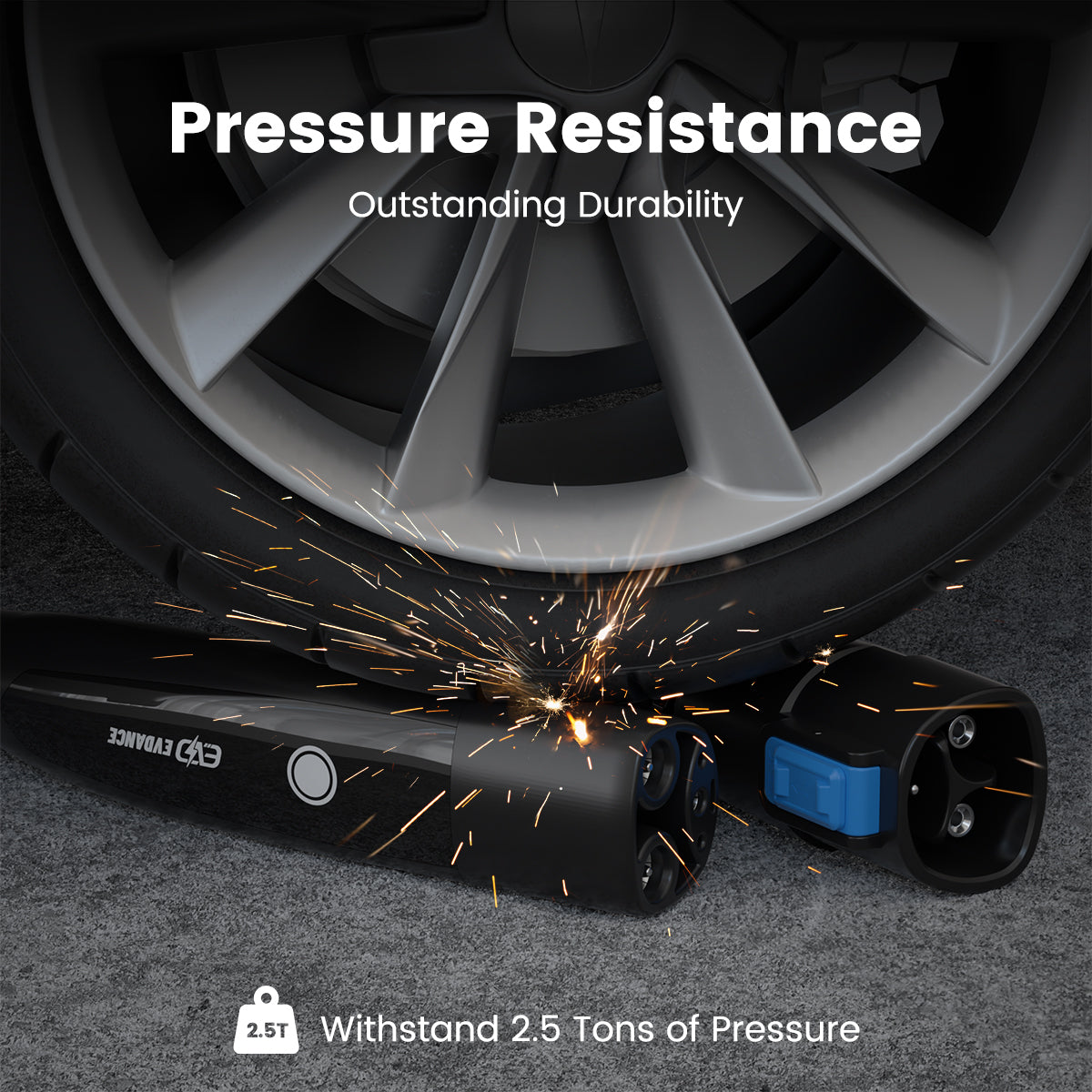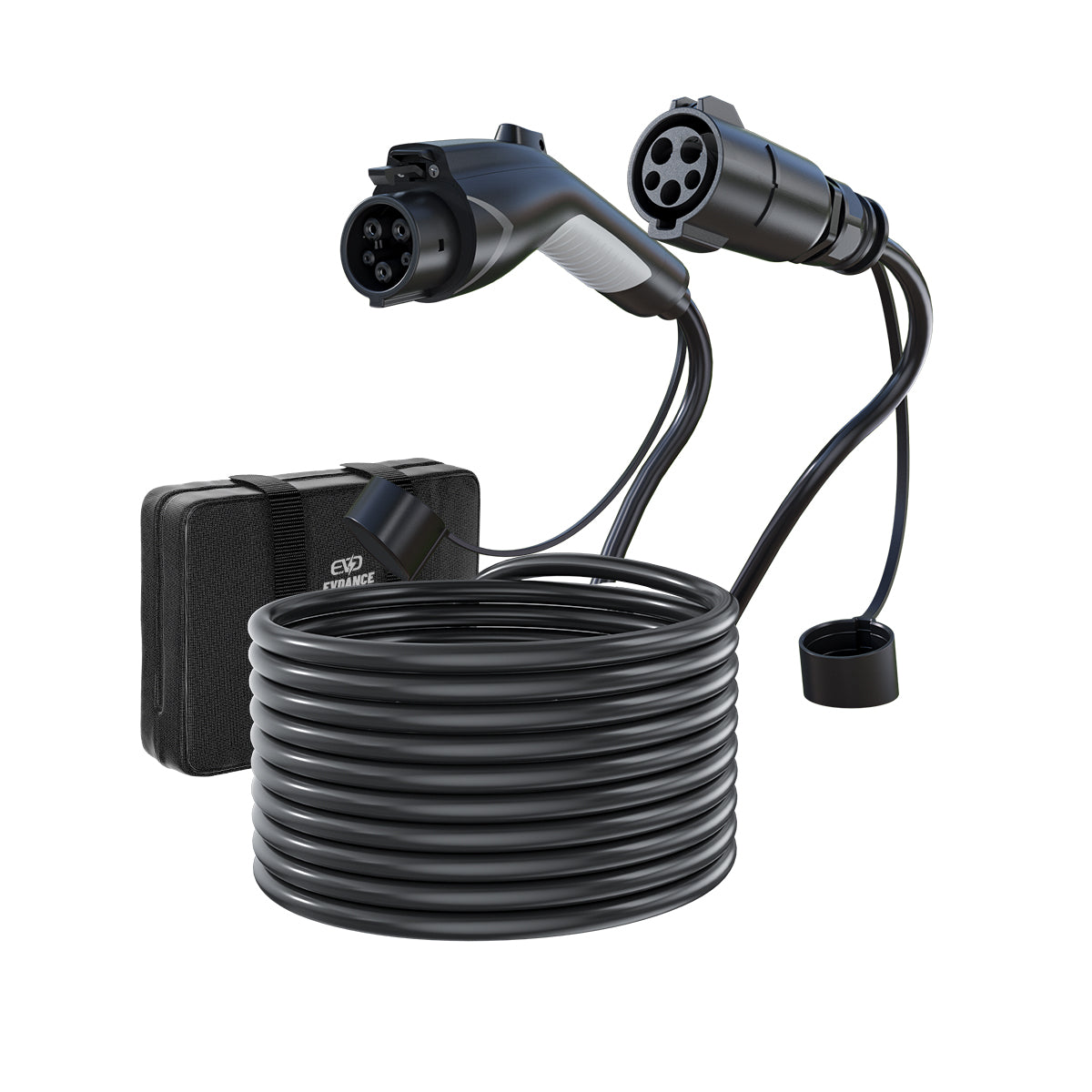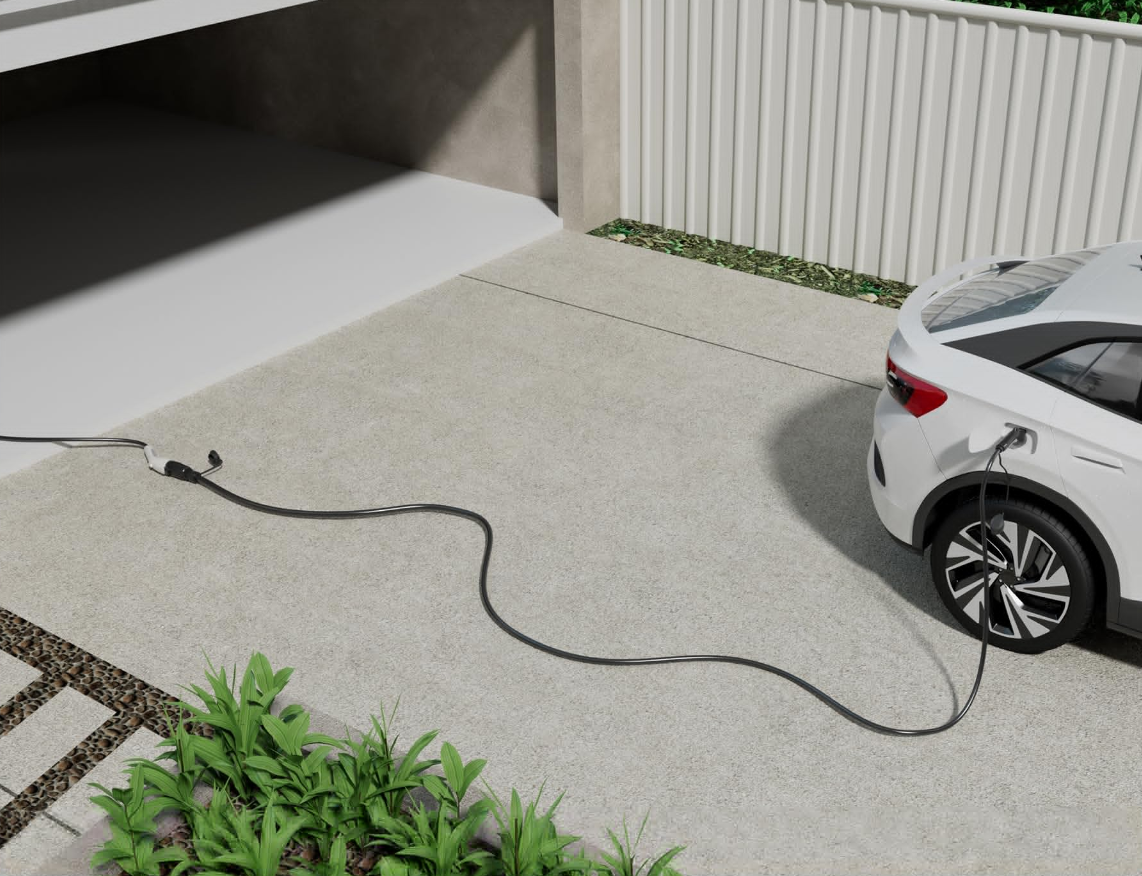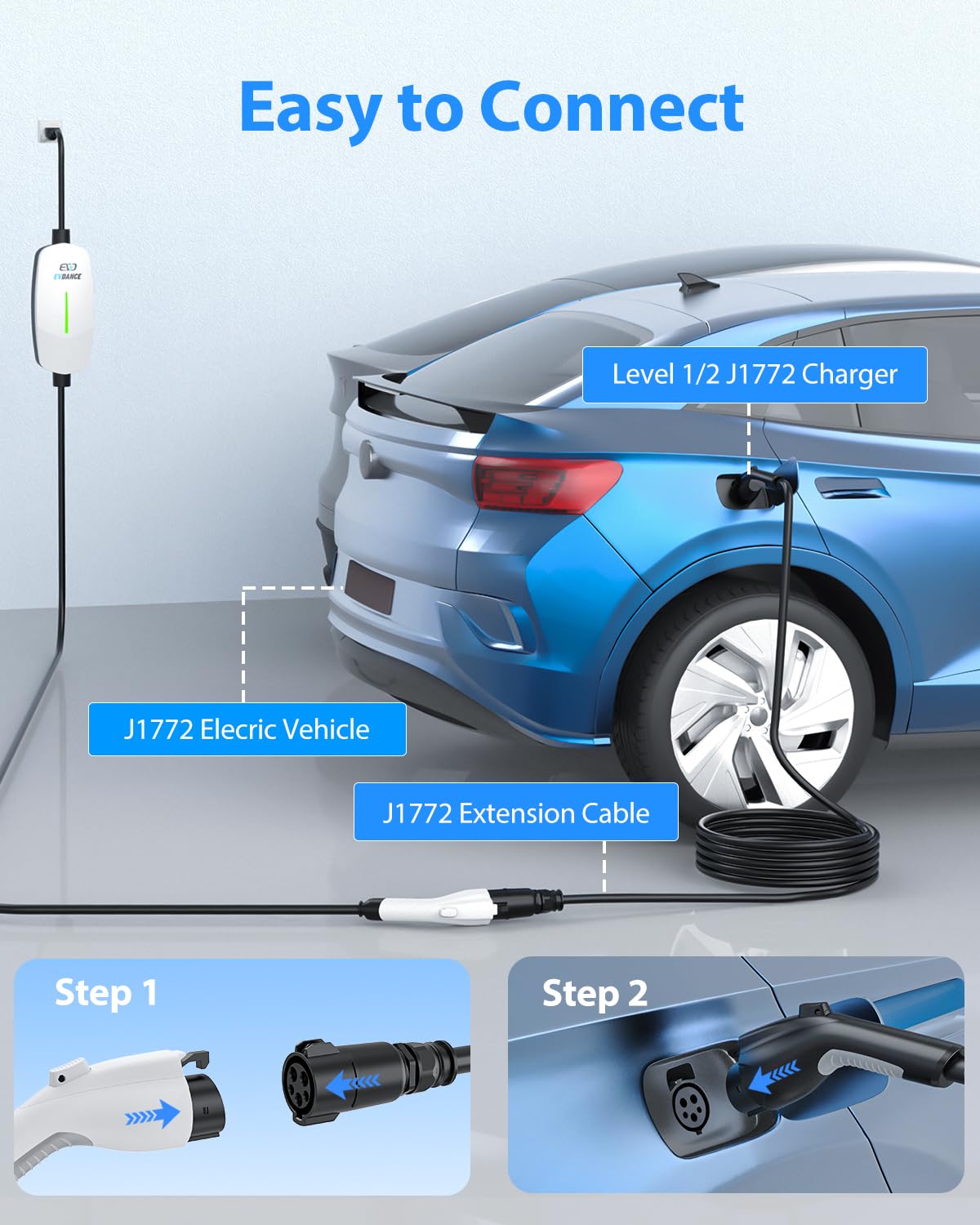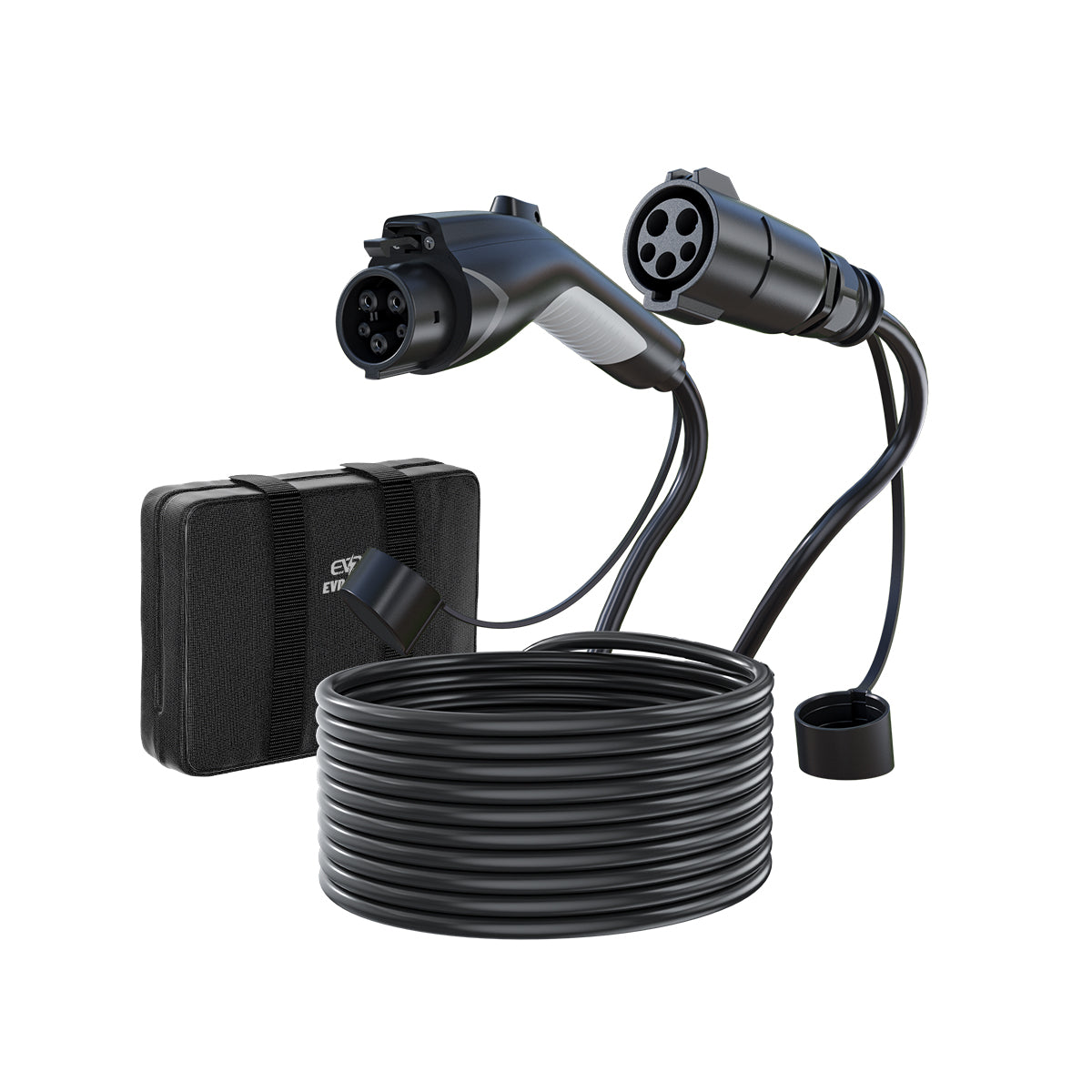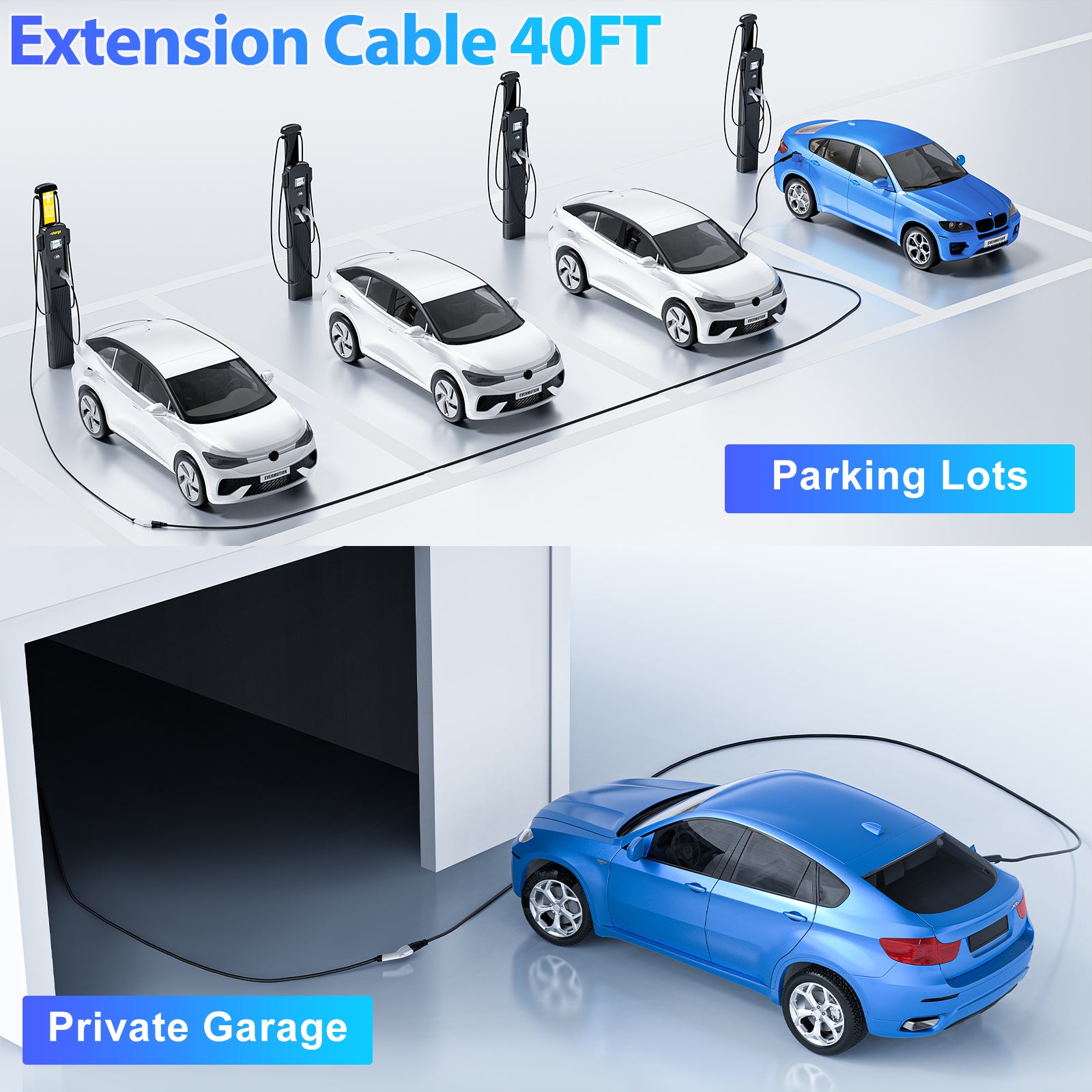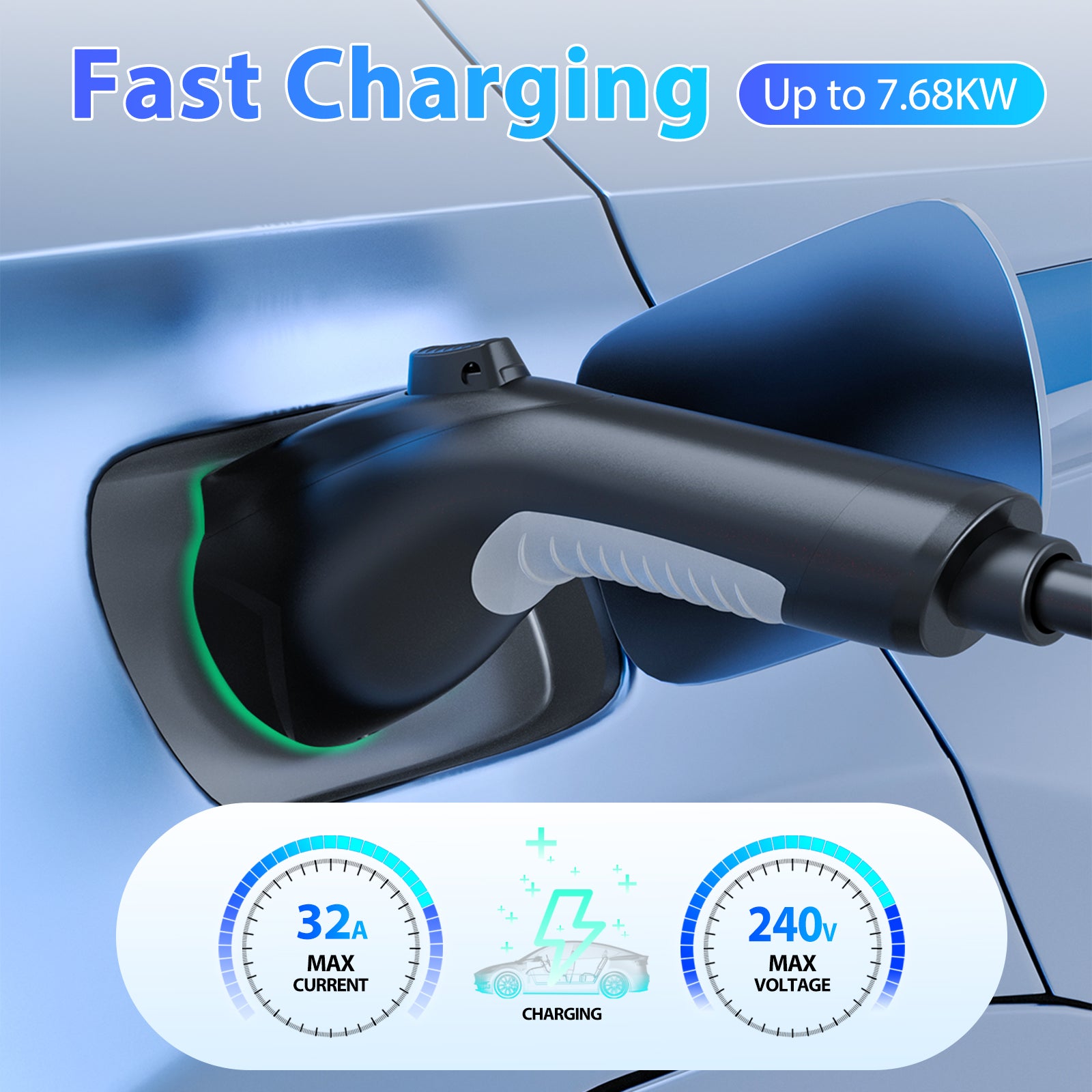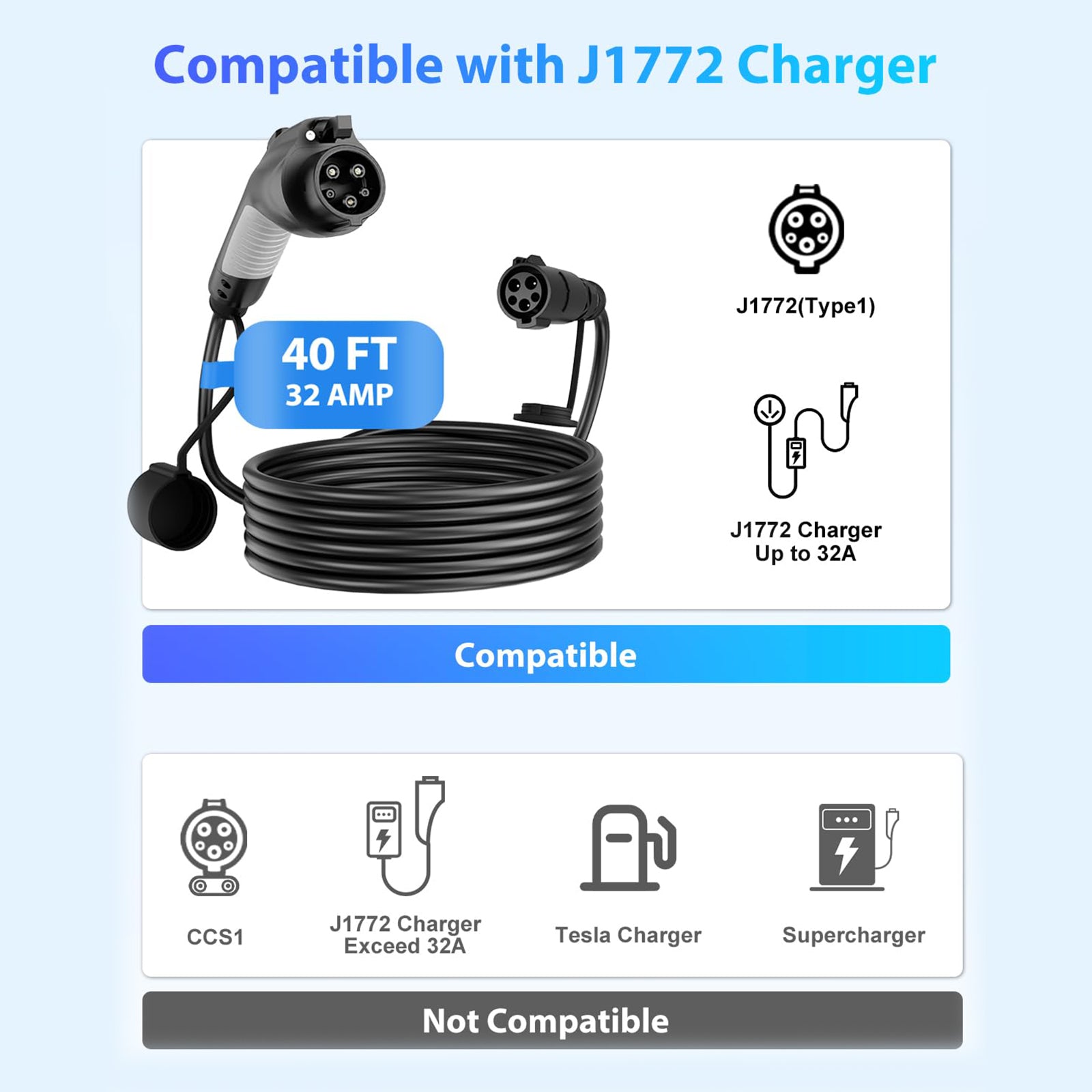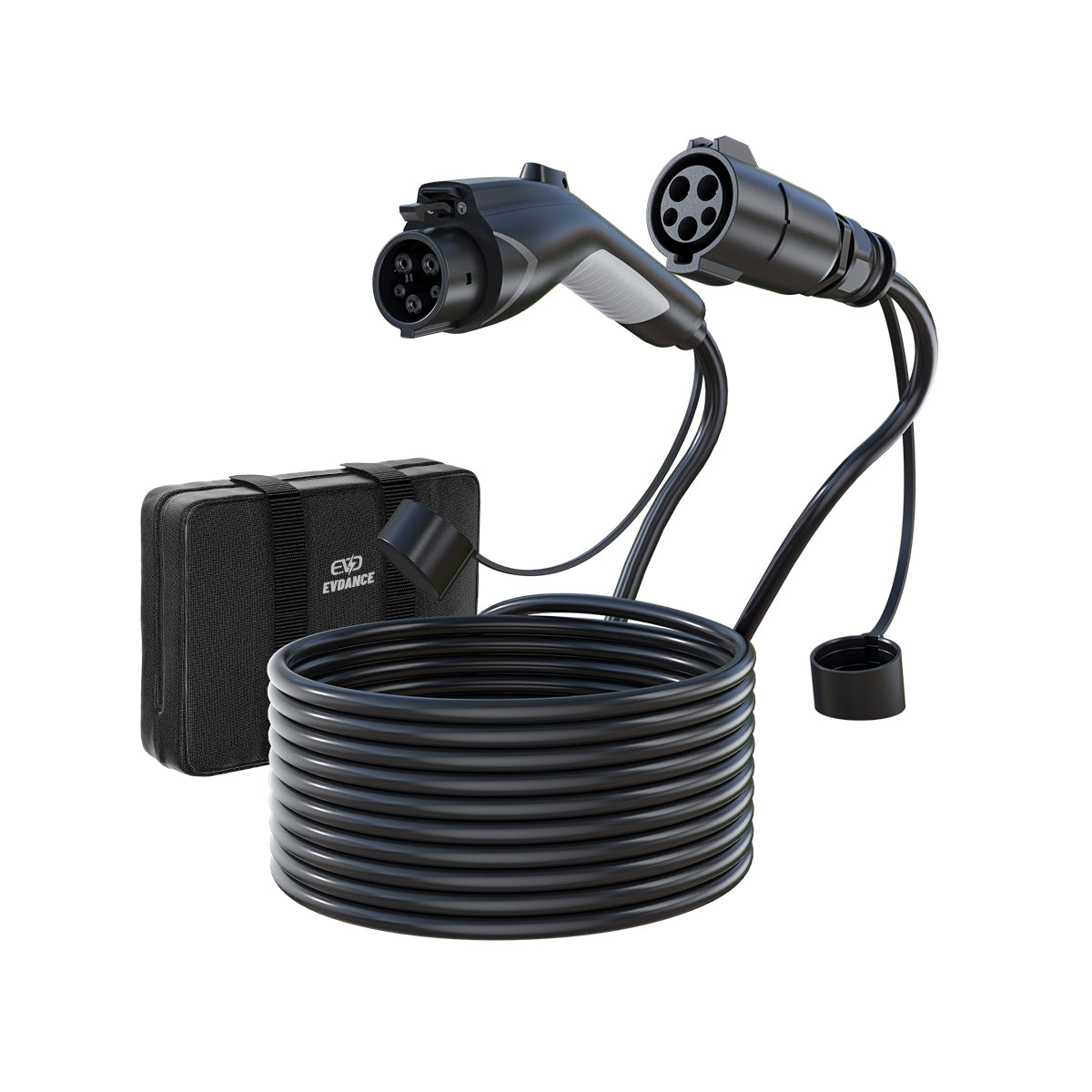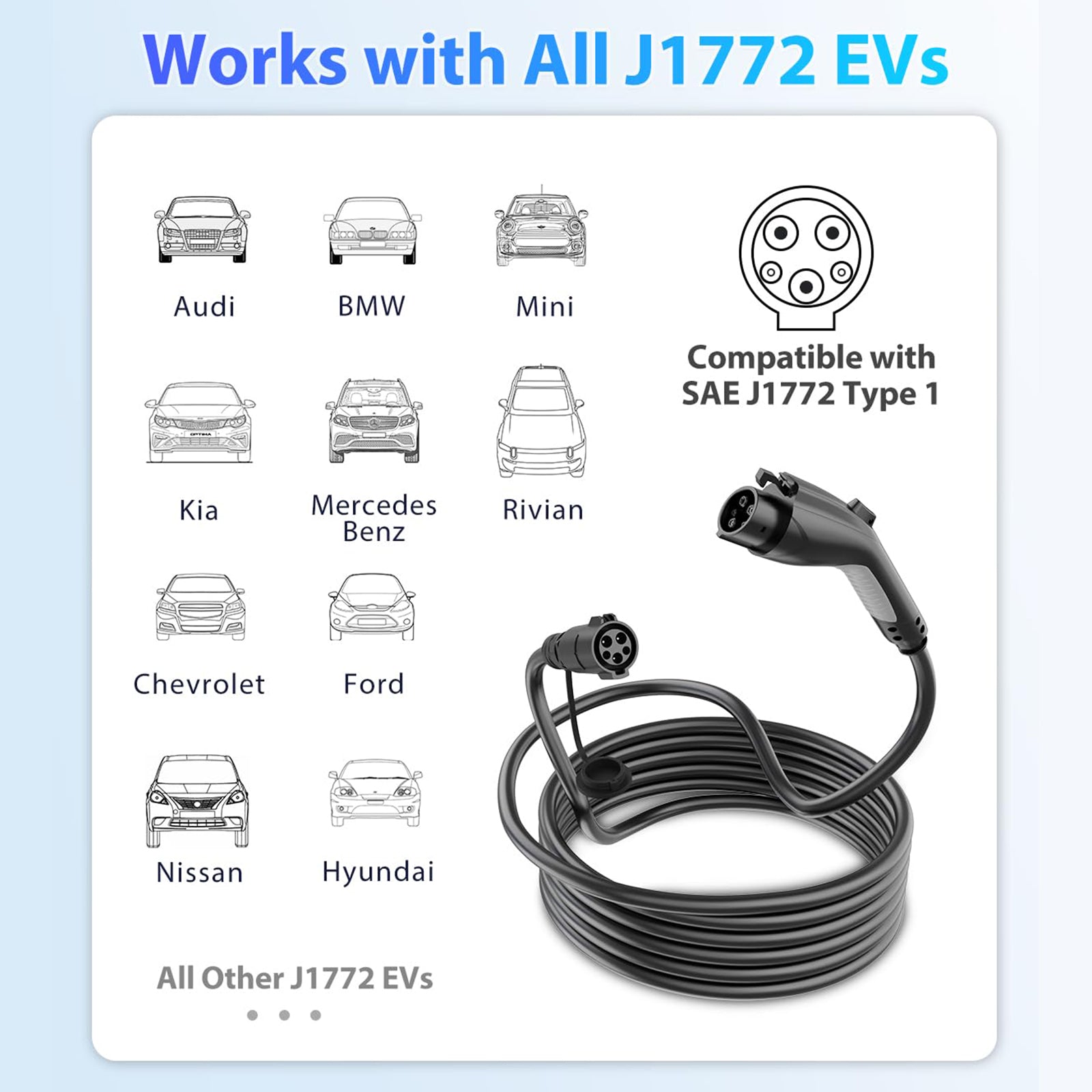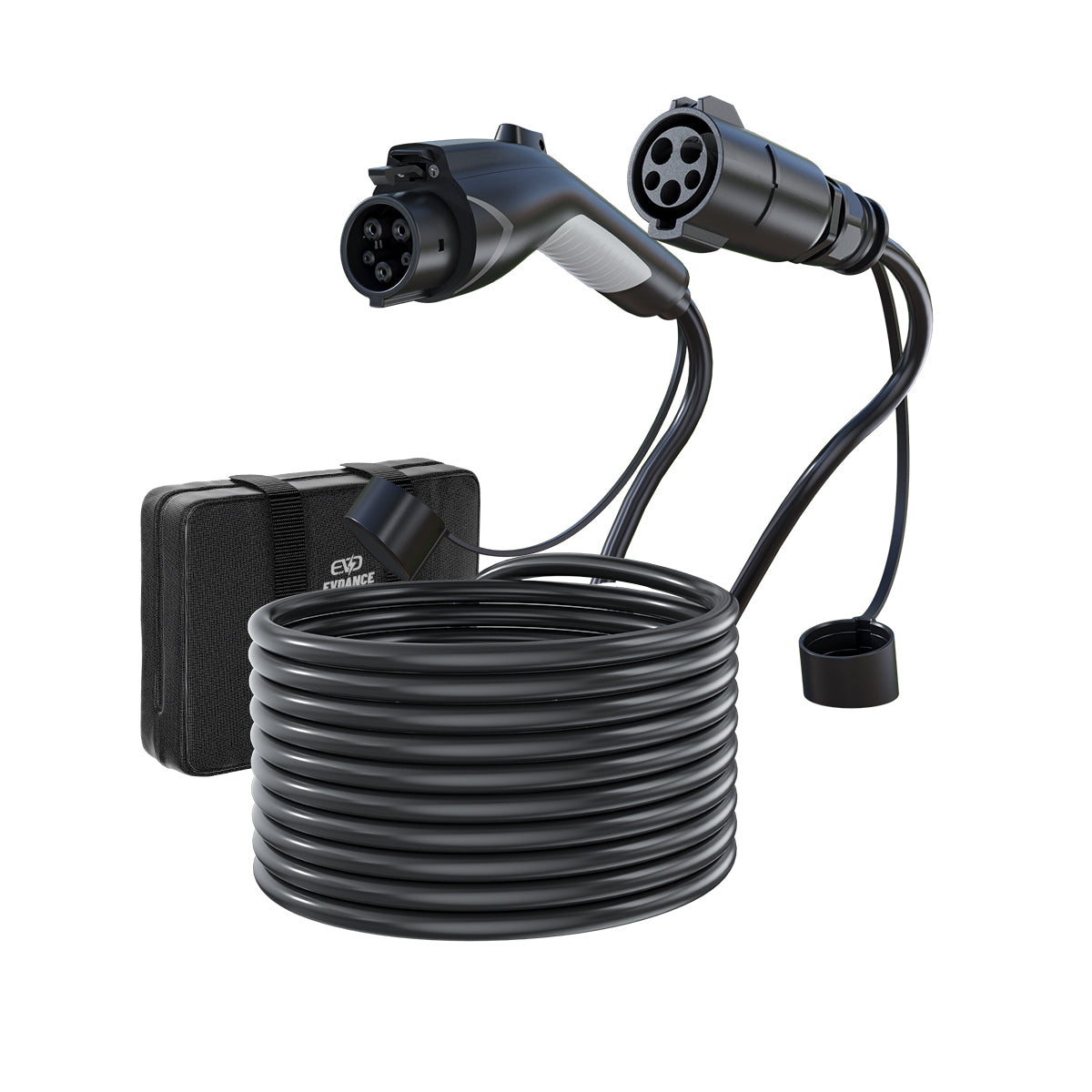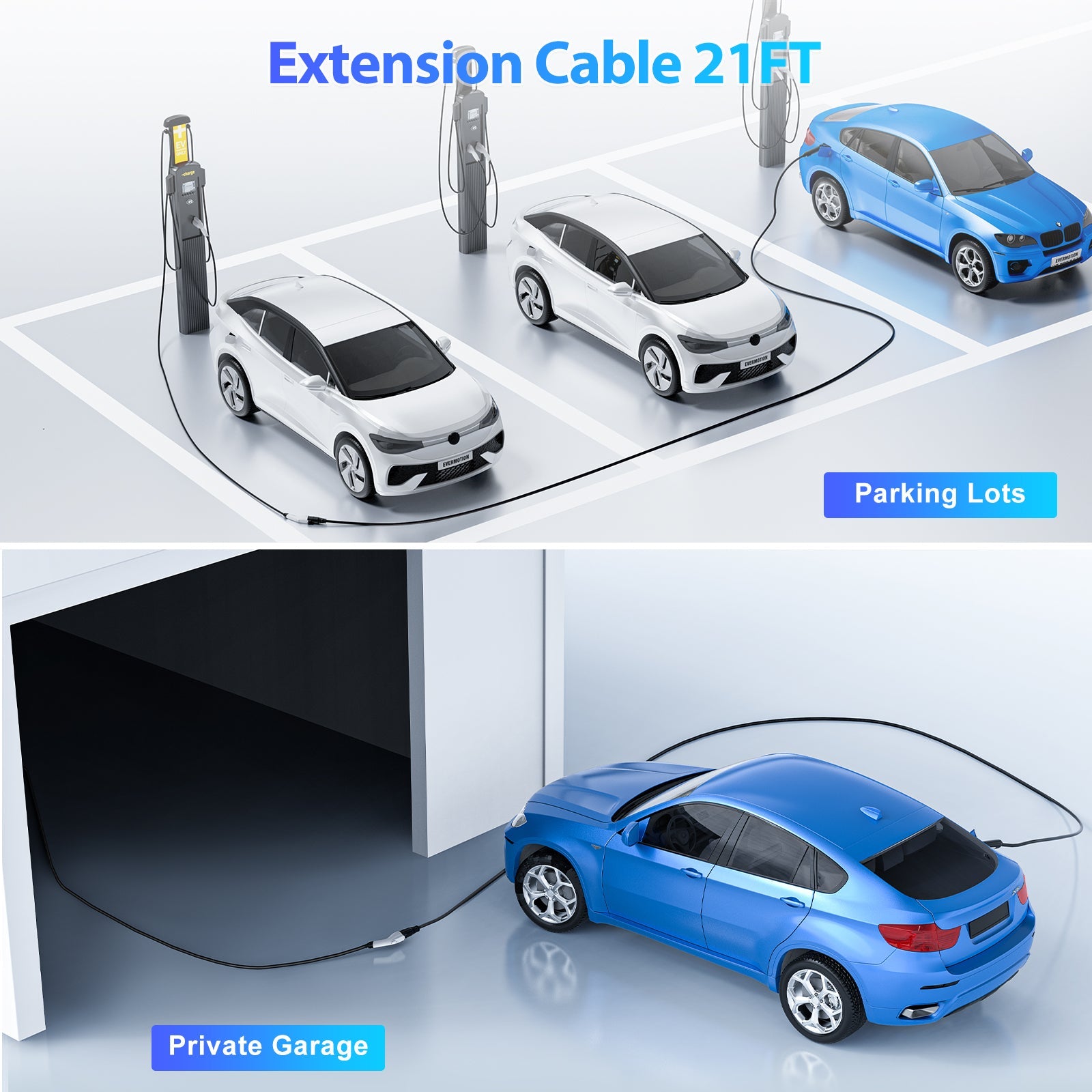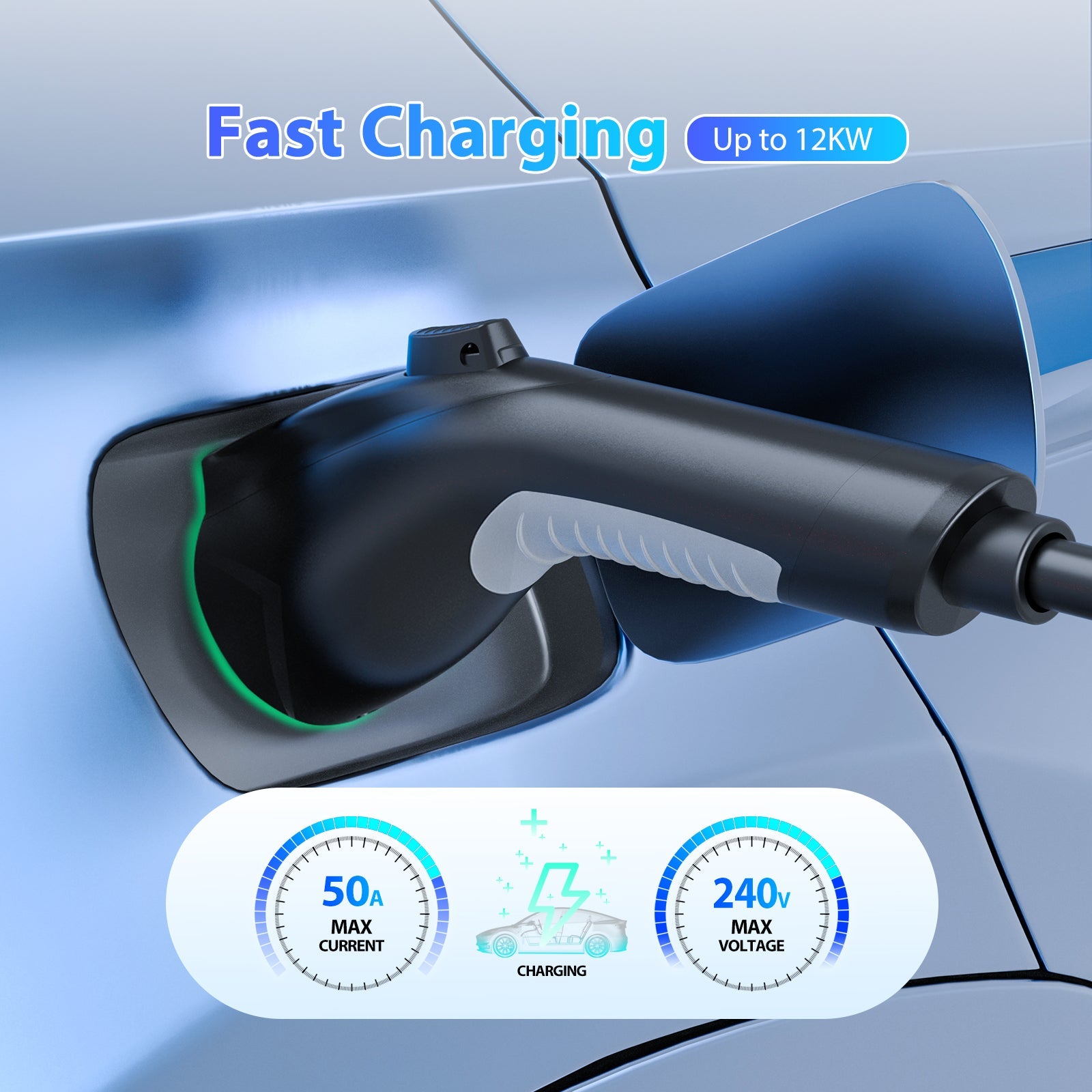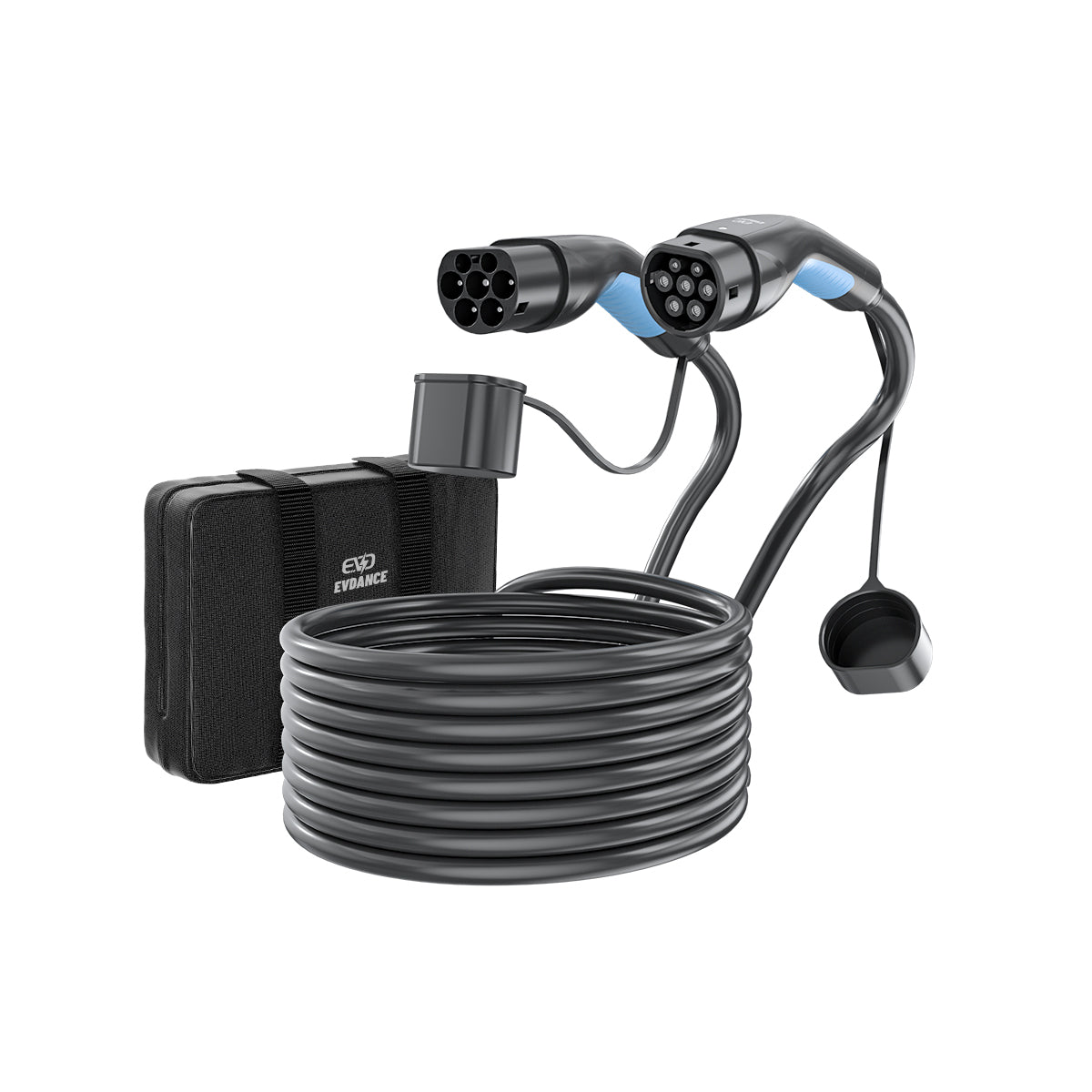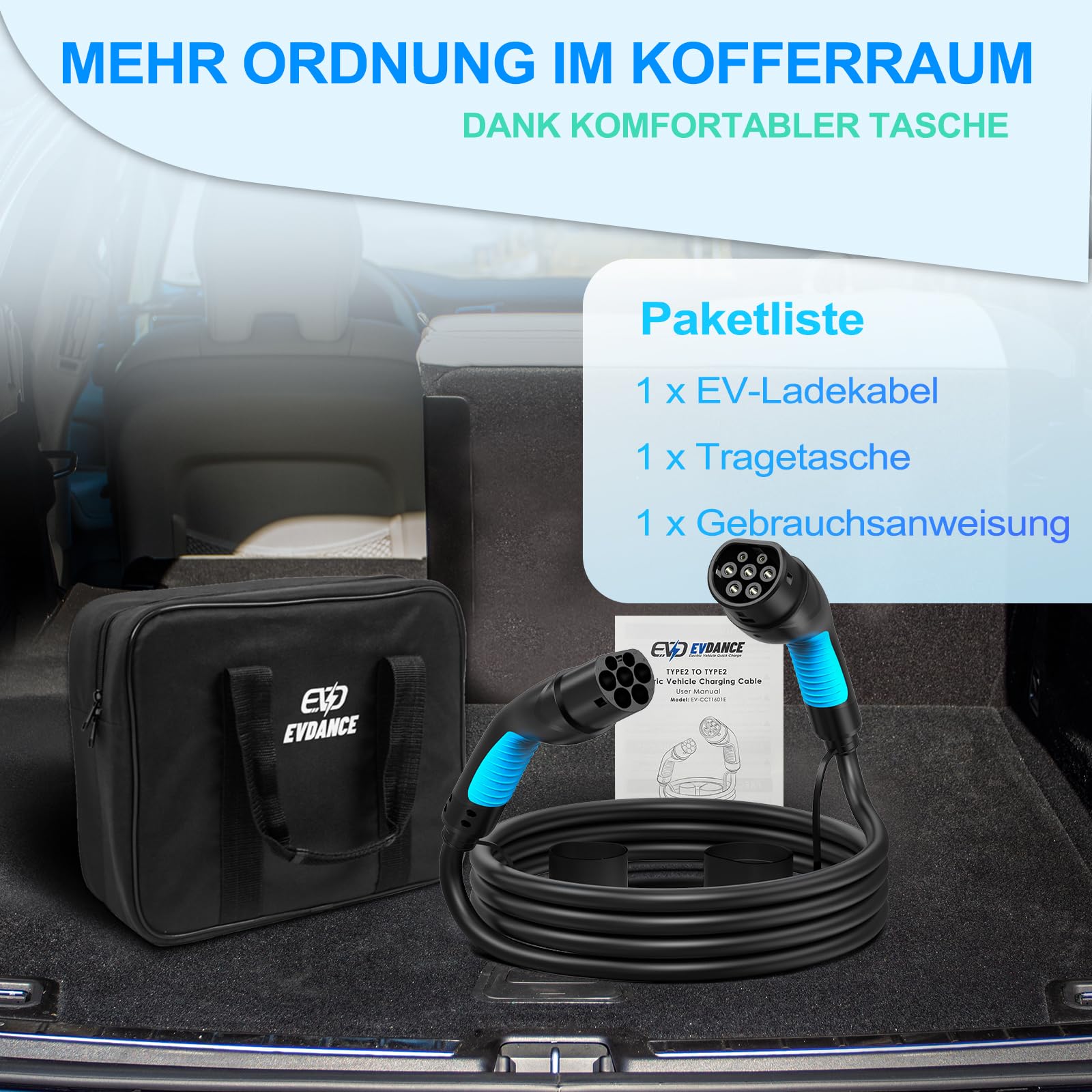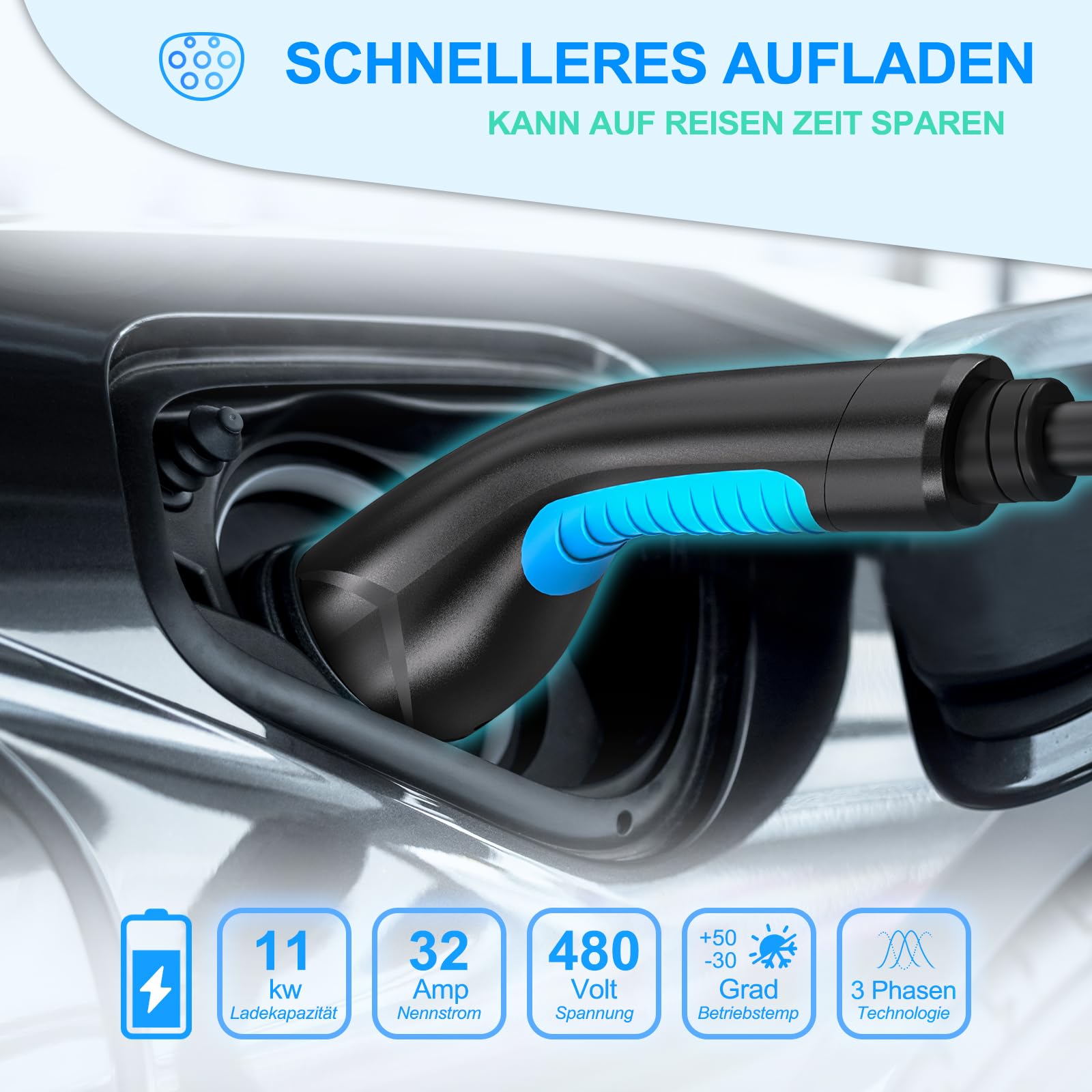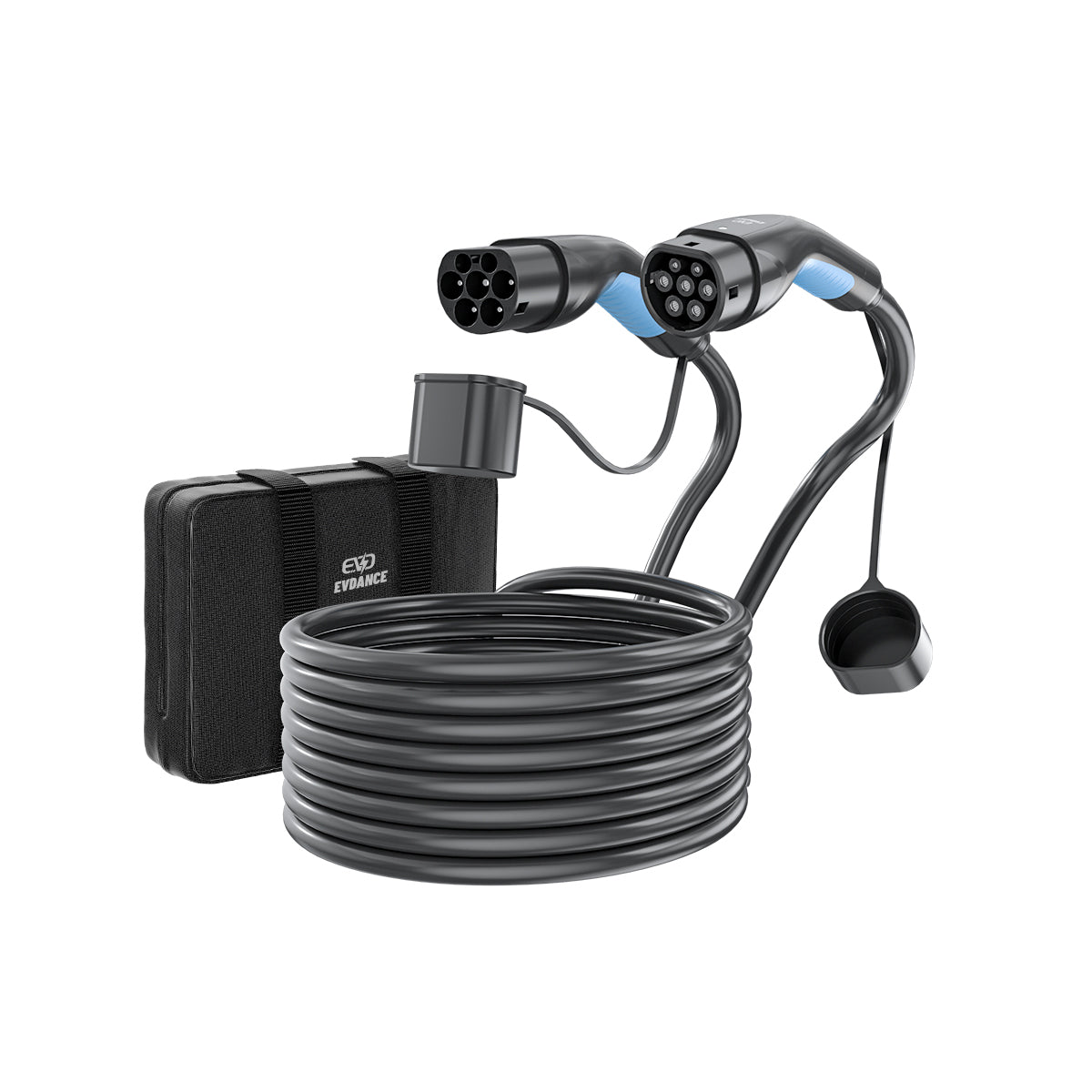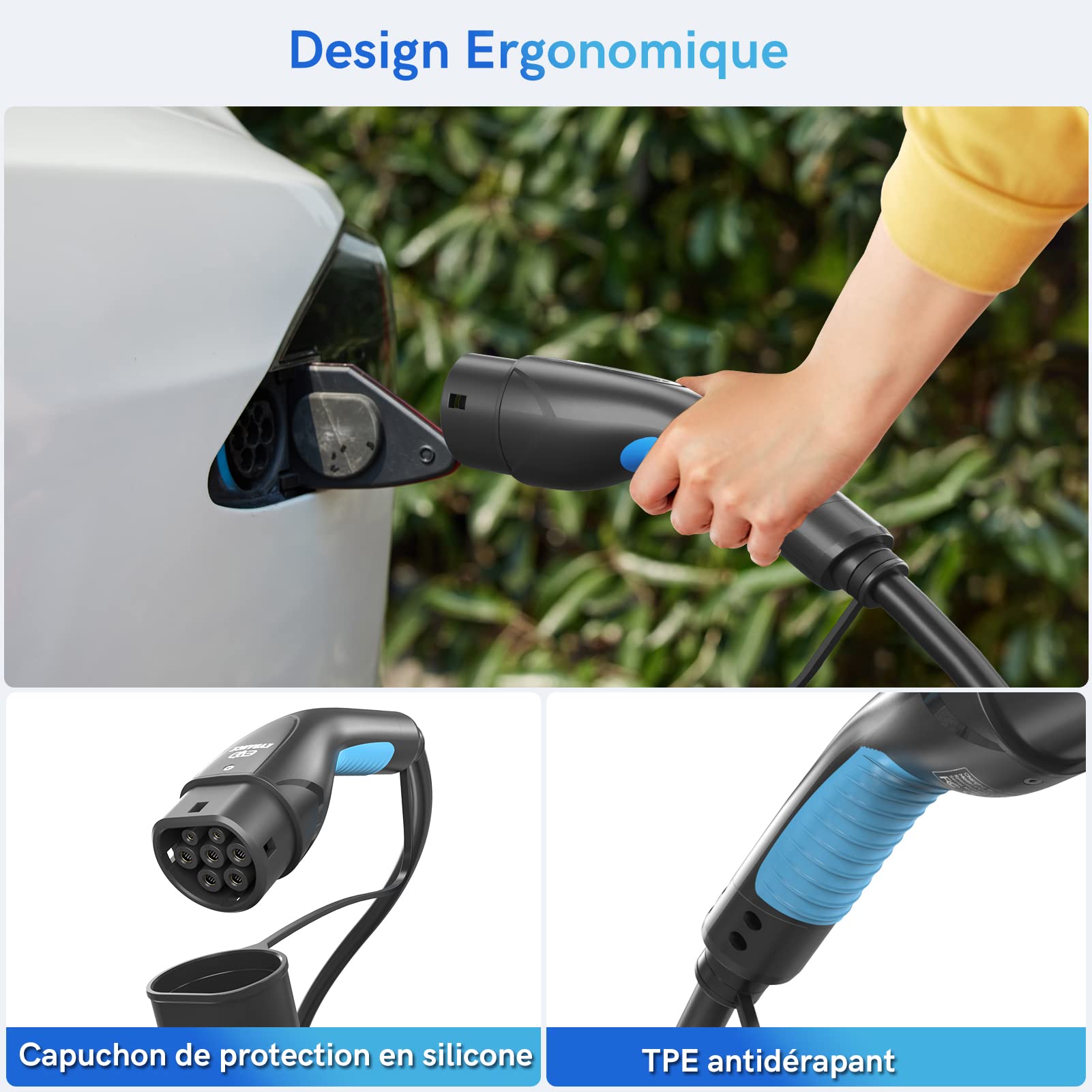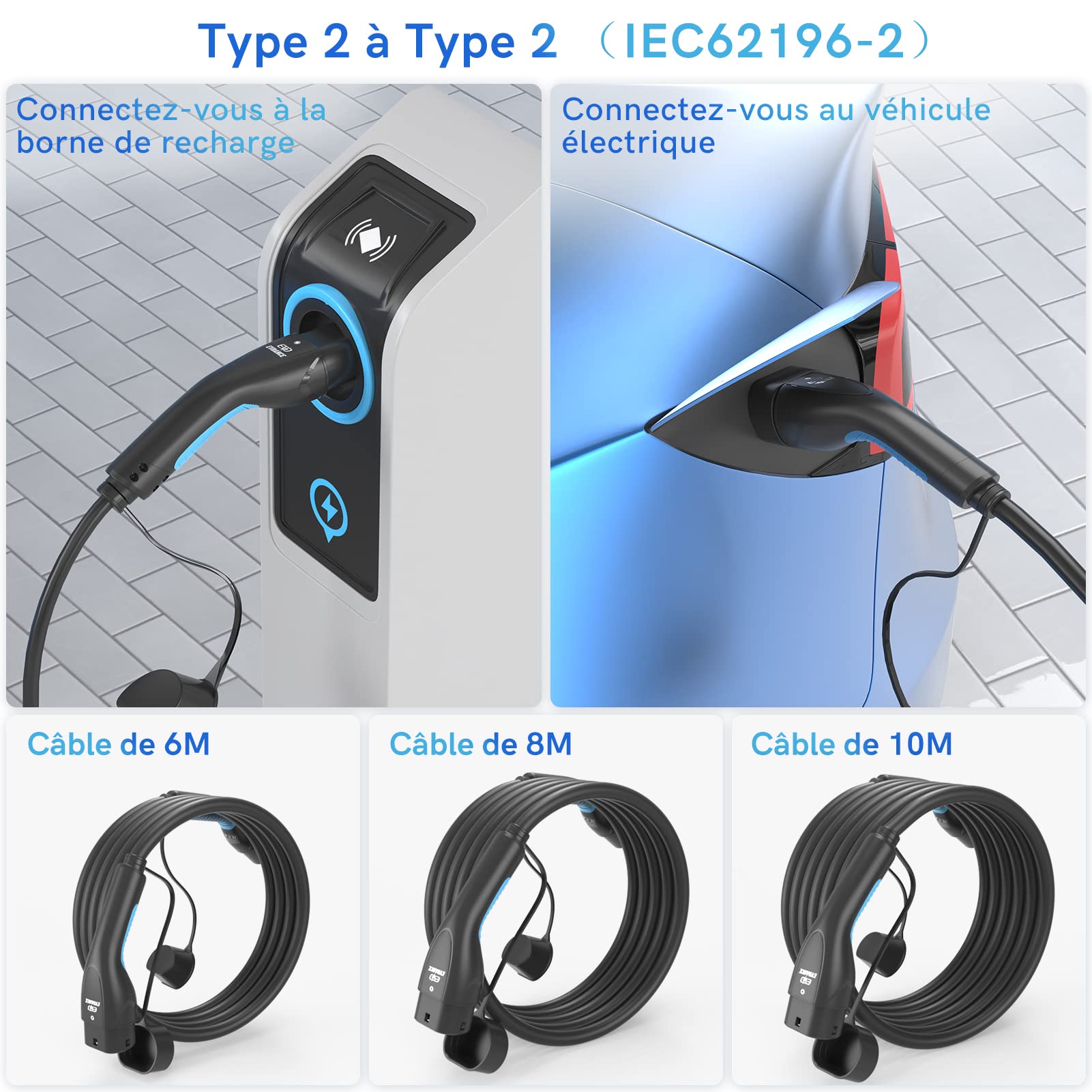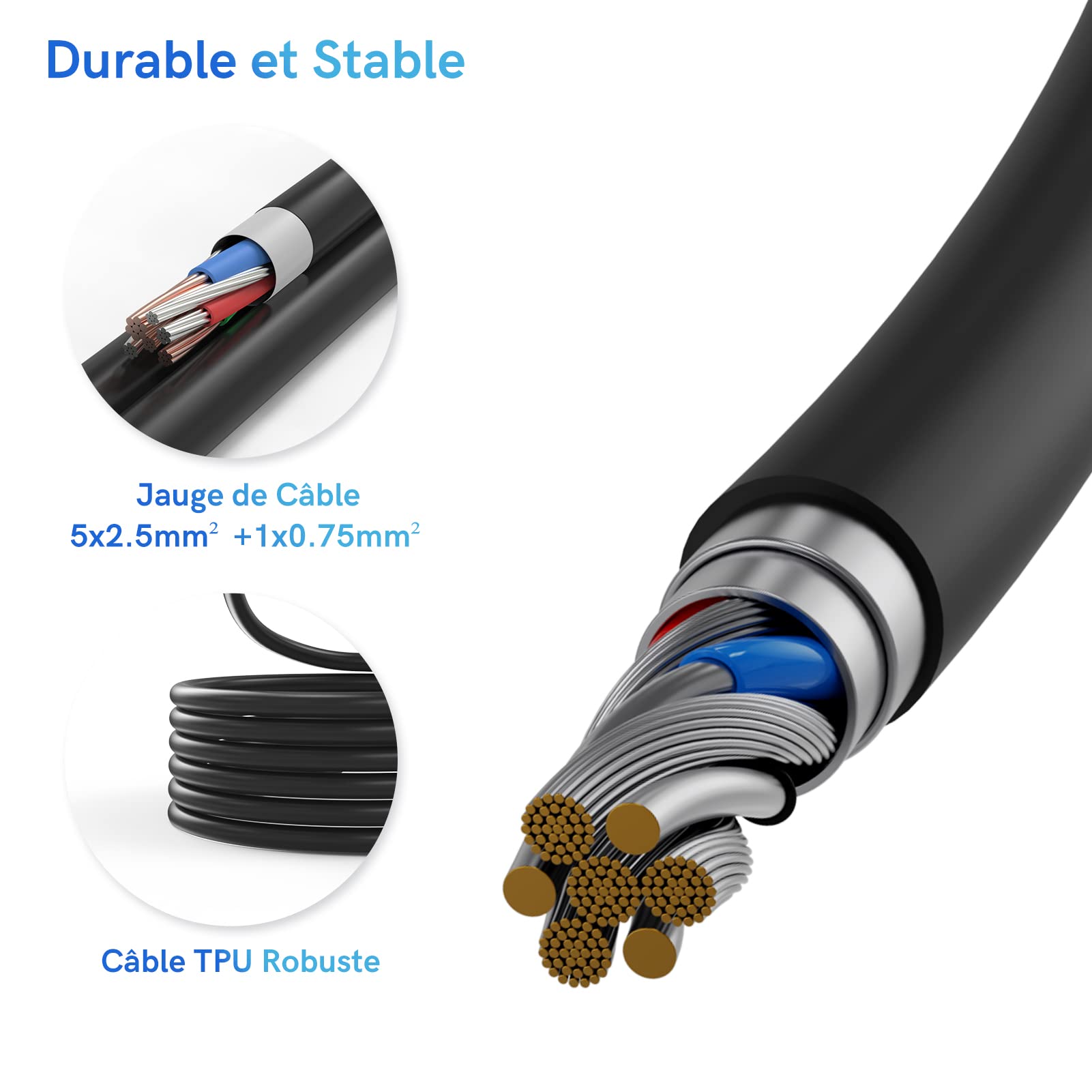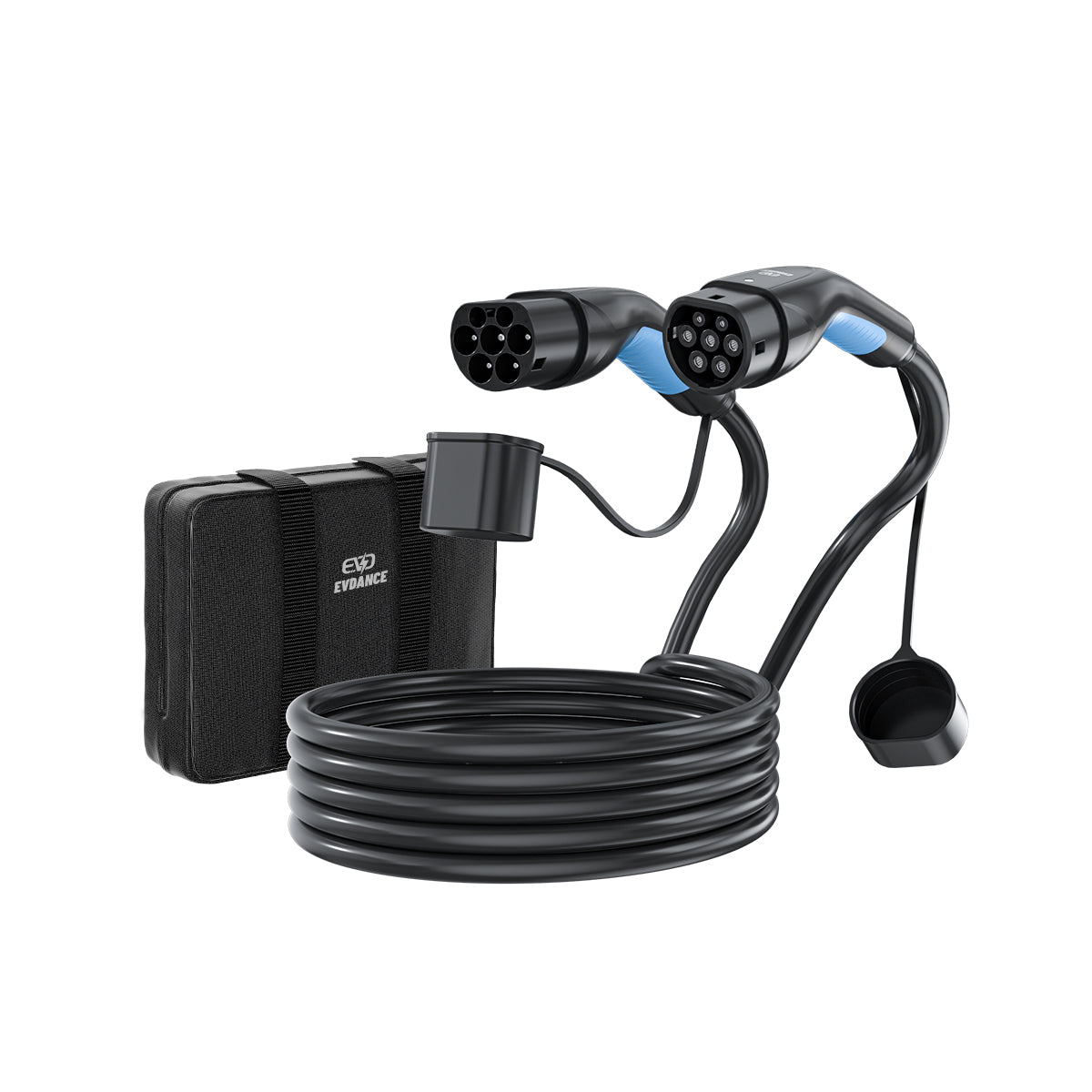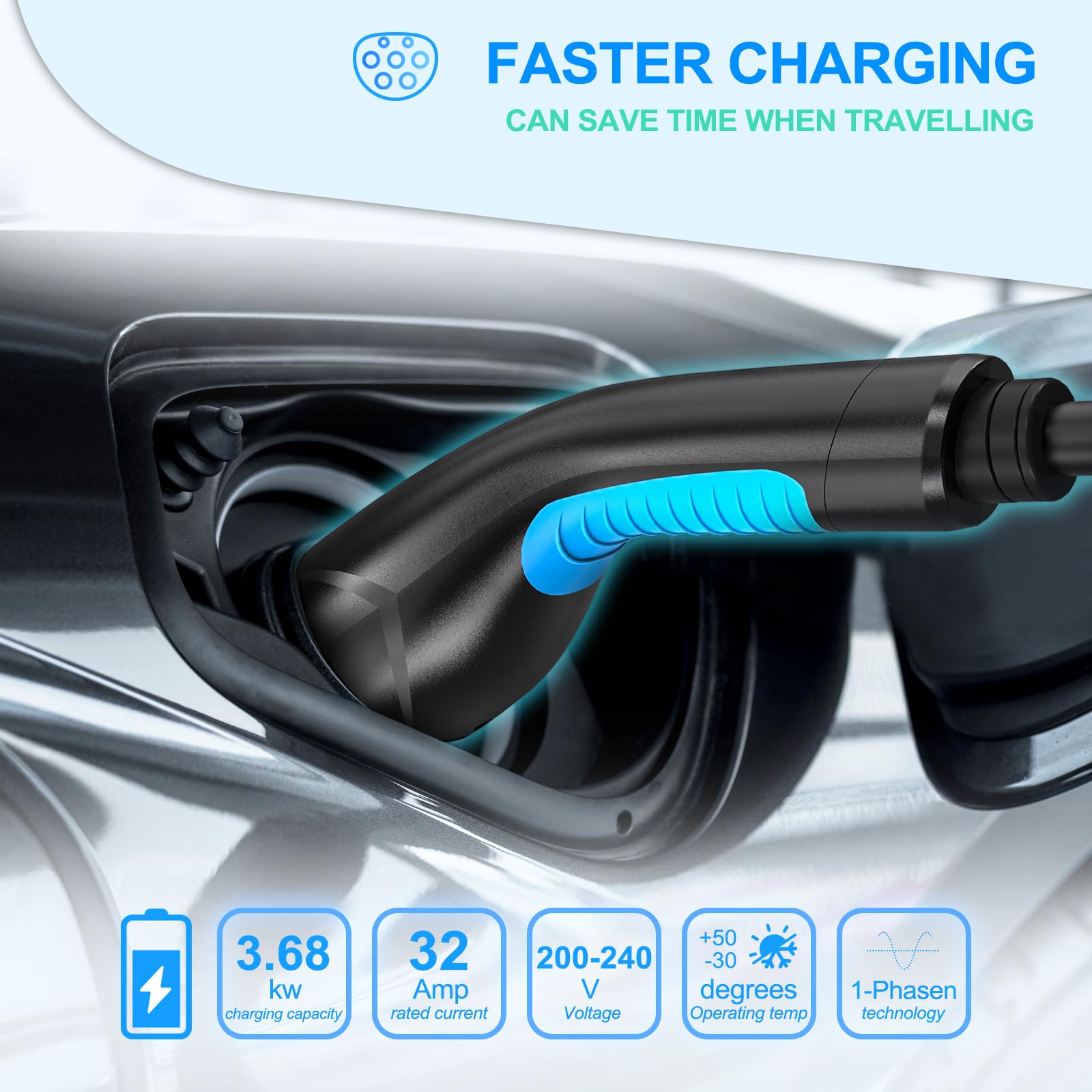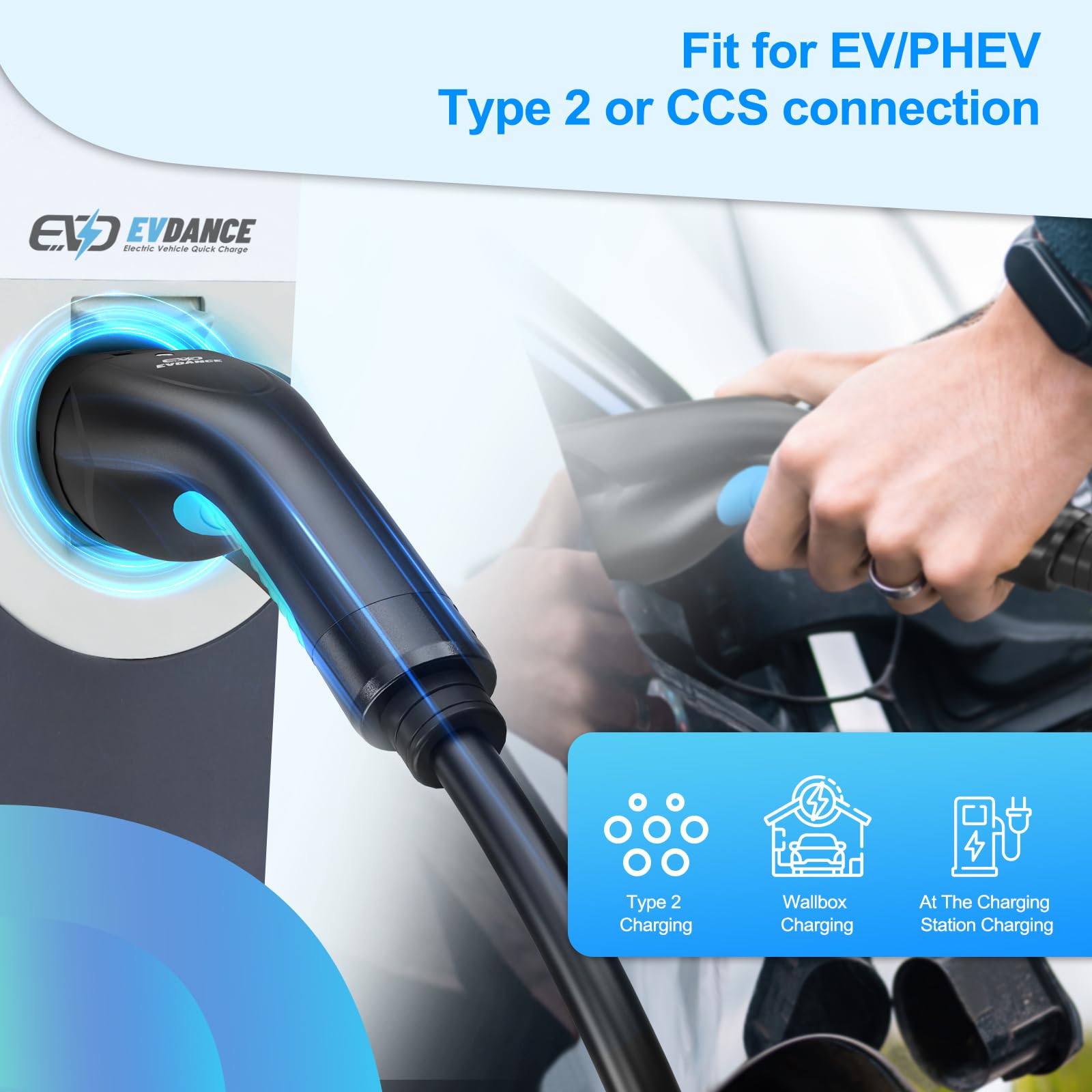FAQs
How do I choose the right gauge for an extension cord?
An extension cord is a flexible electrical cable with a plug on one end and one or more sockets on the other. It allows users to extend the reach of an electrical outlet, making it possible to power devices located farther away. Extension cords are commonly used in homes, workshops, construction sites, and outdoor events where permanent outlets may be unavailable.
What is an EV extension cord?
An EV extension cord is a heavy-duty cable designed specifically to extend the reach between an electric vehicle (EV) and a charging station or power outlet. Unlike standard extension cords, EV cords are built to handle high voltage and amperage, typically supporting Level 1 (120V) or Level 2 (240V) charging. They feature connectors compatible with EV charging equipment and must meet stringent safety and performance standards.
Can I use a regular extension cord to charge my EV?
No. Standard household extension cords are not rated for the high power demands of EV charging. Using one may cause overheating, voltage drop, or even fire hazards. Only use EV-rated extension cords that are UL-listed or meet equivalent certification and are designed to carry the required load safely over extended periods.
What amperage and voltage should my EV extension cord support?
The correct specification depends on your EV charger’s power level:
- Typically requires a 15A or 20A cord, using NEMA 5-15 or 5-20 connectors.
- Usually requires a 30A to 50A cord, using NEMA 14-50, 6-50, or other heavy-duty plugs.
Always match your extension cord’s amperage rating to the output of your EV charger. Underrated cords can overheat and pose safety risks.
Are EV extension cords weatherproof and outdoor-rated?
High-quality EV extension cords are made with weather-resistant (W or W-A rated) jackets and are safe for indoor and outdoor use. Look for cords with IP65 or higher ingress protection to ensure they withstand rain, dust, and temperature variations. These cords are ideal for driveway charging or use in variable climates.
How long can an EV extension cord be?
Most EV extension cords are available in lengths ranging from 10 feet to 50 feet. However, the longer the cord, the greater the risk of voltage drop. To minimize energy loss and maintain charging efficiency:
- Use the shortest possible cord that still meets your needs.
- Choose a thicker gauge wire (e.g., 6 AWG for 50A applications) for longer cords.
What types of plugs are compatible with EV extension cords?
The most common plug types include:
- NEMA 5-15 / 5-20: Standard 120V household outlets (Level 1 charging)
- NEMA 6-20 / 6-50: Common 240V outlets for medium-duty chargers
- NEMA 14-50: Popular for Tesla and many Level 2 chargers. Check your EV and charging equipment specs to ensure compatibility with the extension cord’s plug and socket.
Sind EVDANCE Tesla-Verlängerungskabel mit allen Tesla-Modellen kompatibel?
Ja, EVDANCE Tesla-Verlängerungskabel sind so konzipiert, dass sie mit allen Tesla-Modellen kompatibel sind, einschließlich Model S, Model 3, Model X und Model Y. Sie funktionieren nahtlos mit den proprietären Ladeanschlüssen von Tesla.
Welche Längenoptionen sind für Tesla-Verlängerungskabel verfügbar und welchen Einfluss haben sie auf das Laden?
EVDANCE Tesla-Verlängerungskabel sind in verschiedenen Längen erhältlich, normalerweise zwischen 21 und 40 Fuß. Die Länge des Kabels ermöglicht mehr Flexibilität beim Erreichen von Ladestationen, es ist jedoch wichtig, ein Kabel mit ausreichendem Querschnitt zu verwenden, um sicherzustellen, dass die Ladeeffizienz nicht erheblich abnimmt.
Welche Stromkapazität können EVDANCE Tesla-Verlängerungskabel verarbeiten?
EVDANCE Tesla-Verlängerungskabel sind für hohe Stromkapazitäten von bis zu 50 Ampere ausgelegt. Dadurch wird sichergestellt, dass sie Teslas Level-2-Laden unterstützen und bis zu 9,6 kW Leistung für schnelleres und effizienteres Laden bereitstellen.
Sind EVDANCE Tesla-Verlängerungskabel für den Einsatz im Freien sicher?
EVDANCE Tesla-Verlängerungskabel sind aus langlebigen, wetterbeständigen Materialien gefertigt und verfügen über hohe IP-Schutzarten (IP66), um sicherzustellen, dass sie wasser- und staubdicht sind. Dadurch sind sie für den Einsatz im Freien bei unterschiedlichen Wetterbedingungen sicher. Überprüfen Sie unbedingt die Spezifikationen eines bestimmten Produkts, um seine Eignung für den tatsächlichen Einsatz zu bestätigen.
Auf welche Sicherheitsmerkmale sollte ich bei einem Tesla-Verlängerungskabel achten?
EVDANCE Tesla-Verlängerungskabel verfügen über wichtige Sicherheitsfunktionen wie Überstromschutz, Überspannungsschutz, Wärmeschutz und hochwertige Anschlüsse, um Überhitzung zu verhindern. Zertifizierungen wie CE zeigen an, dass das Kabel den Sicherheitsstandards der Branche entspricht. Darüber hinaus verbessern versilberte Anschlüsse die Leitfähigkeit und Haltbarkeit.
EV Extension Cord: A Practical Solution for Flexible and Safe Home Charging
As the adoption of electric vehicles (EVs) continues to grow, so does the demand for versatile, accessible, and safe home charging infrastructure. Among the essential tools supporting this need, the EV extension cord has emerged as an invaluable solution—providing added convenience and flexibility for EV owners whose parking locations may not align perfectly with a fixed charging station. Whether you live in a house with limited driveway access, a shared residential property, or a location where your garage outlet isn't ideally positioned, a well-constructed EV extension cord can bridge the gap between your vehicle and the power source.
Unlike traditional household extension cords, which are typically designed for low-wattage devices such as lamps or power tools, EV extension cords are engineered to handle high power loads safely over extended distances. These cords are built with heavy-gauge conductors, weather-resistant jackets, and reinforced connectors that meet strict electrical safety standards. Their compatibility with both Level 1 and Level 2 charging setups makes them highly adaptable, especially for users who need temporary or portable solutions.
In particular, a properly rated EV extension cord enables users to:
However, it is crucial to understand that not all extension cords are appropriate for EV charging. Using an undersized or uncertified cord can lead to overheating, reduced charging speed, or even fire risk. For this reason, EV extension cords should be UL-listed (or ETL equivalent), made from 100% copper wiring, and rated for the specific amperage and voltage of the charging setup. Many EV owners also opt for cords with built-in LED indicators, weatherproof plug caps, or handles for easier connection and disconnection.
In summary, the EV extension cord is not merely a convenience—it’s a practical, scalable solution that supports the evolving needs of electric vehicle users. When selected and used correctly, it enhances charging accessibility without compromising safety, efficiency, or long-term equipment integrity.
Why Use an EV Extension Cord?
For many EV owners, especially those in rental homes, shared garages, or with limited driveway access, a charging station may be installed far from the ideal vehicle parking spot. EV extension cords help bridge that distance while preserving the charging efficiency. Their benefits include:
- Flexible Parking Options: Allows EV charging in locations where direct access to a charger or outlet is limited.
- Cost Efficiency: Avoids the need for permanent rewiring or relocating existing power infrastructure.
- Portability: Can be used at home, work, or during travel when staying at locations with limited outlet placement.
Key Specifications and Power Ratings
When selecting an EV extension cord, matching its electrical capacity to your EV charger is critical:
- Voltage: 120V for Level 1, 240V for Level 2
- Amperage: Ranges from 15A to 50A, depending on your EV and charger specs
- Plug Types: Common types include NEMA 5-15, 5-20, 6-20, 6-50, and 14-50
- Wire Gauge: A thicker gauge (e.g., 10 AWG for 30A, 6 AWG for 50A) reduces voltage drop and enhances safety, especially for long cords
Always verify that the cord’s connectors are compatible with your EV charger and that the total load (including cable length and temperature conditions) doesn’t exceed the cord’s rating.
Installation and Safety Considerations
- Using an EV extension cord safely requires adherence to certain best practices:
- Certified Equipment: Only use cords that are UL-listed or equivalent, built to withstand high current flow and outdoor conditions.
- Dedicated Circuit: Ensure the extension cord is plugged into adedicated circuit with the appropriate breaker to prevent overload.
- Avoid Coiling in Use: Cords should be fully uncoiled during use to prevent heat buildup.
- Water and Dust Resistance: Choose cords with weather-resistant jackets (rated W or W-A) and IP65+ ingress protection for safe outdoor use.
- Regular Inspection: Frequently check for damage, wear, or overheating. Discontinue use if the cord becomes warm to the touch or shows visible wear.
